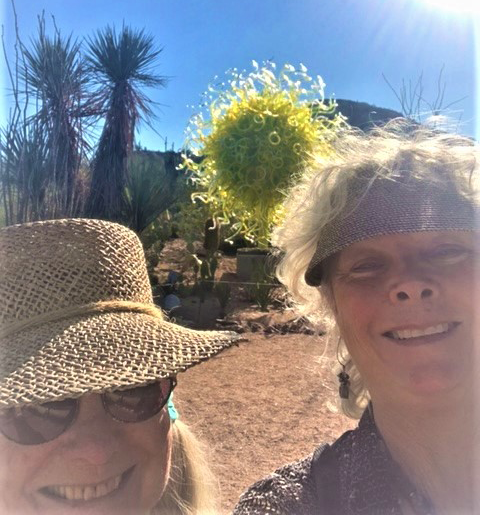

My friend, Deb Ogg, invited me in early February to go with her to the Desert Botanical Garden to see the Chihuly exhibit, and it was awesome. In fact, we enjoyed our experience so much that we returned the following week and were delighted to find that the light was different that day, so the sculptures looked new and different too. I was familiar with Chihuly’s work from living for 33 years in the Pacific Northwest and have visited his Chihuly Garden and Glass at the Seattle Center. His glass sculptures are amazing, whimsical, and inspirational.
Dale Chihuly exhibited at the Desert Botanical Garden (DBG) in 2018, and you will find a few pictures from then in my previous blog about the Desert Botanical Garden. This year’s show is unique because it features not only outdoor displays, but also an inside exhibit at Dorrance Hall showing not only some of his smaller pieces, but also paintings he made to give his glassblowers patterns to follow when translating his designs to glass.
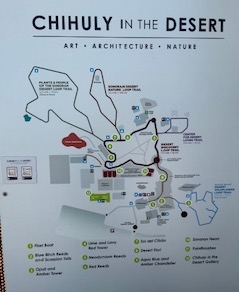
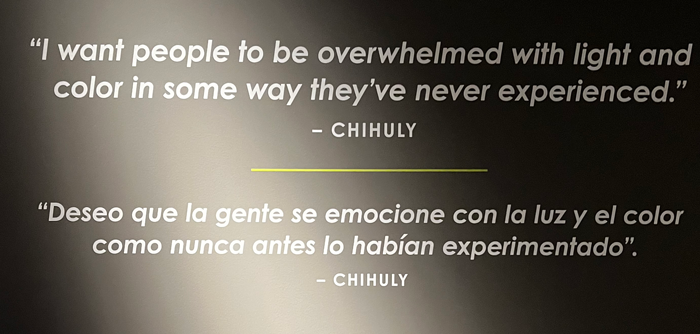
Throughout the exhibit are quotations from Chihuly which establish both the intent of his art and his expectations for the viewer.
According to Deb who heard it from some of the gardeners at the DBG, Dale Chihuly came himself last year and walked around the garden, deciding which pieces he would exhibit, where they would go, and what kind of support system they would need to be safely and securely displayed.
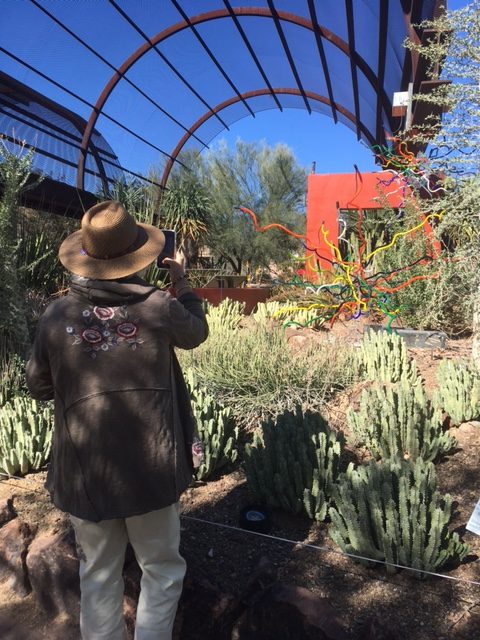
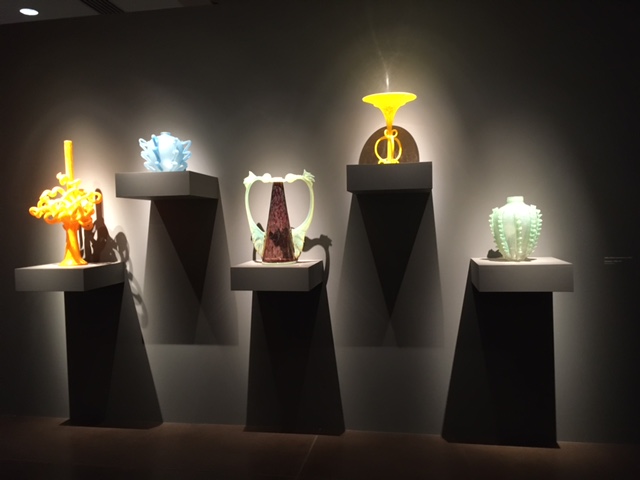
Then, several weeks before the exhibit opened, trucks and crews arrived to build whatever foundations were needed for the displays and to set the sculptures securely in place. The Dorrance Hall exhibit also had to be installed and the lighting adjusted appropriately.
Dale Chihuly was born in Tacoma, Washington, in 1941 (yes, he’s 80 years old and still going strong), and he first became interested in glass when he studied interior design at the University of Washington. In 1965, he attended the first glass program in this country held at the University of Wisconsin and another at the Rhode Island School of Design. In 1968, he got a Fulbright Fellowship to study at the Venini Glass Factory in Venice, Italy.
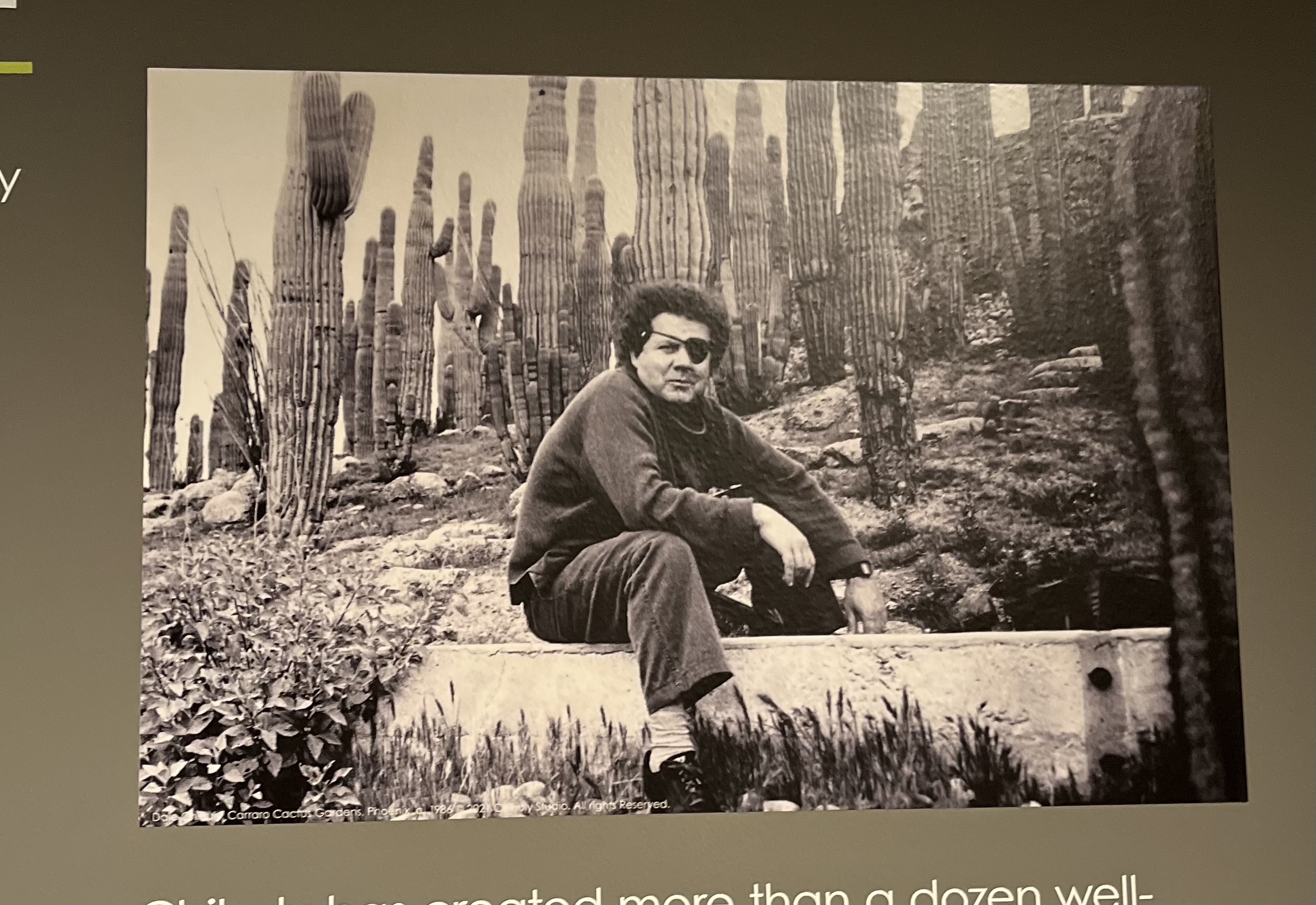

Chihuly is famous world-wide for his amazing glass sculptures and creations. His work is displayed in over 200 museums around the globe, and he has exhibited in the DeYoung Museum in San Francisco, the Museum of Fine Arts in Boston, and The Royal Botanic Gardens, Kew, near London, England. From now until June 19, 2022, you can visit his “designed for the desert” exhibits at two wonderful Phoenix, AZ, locations: The Desert Botanical Gardens and Frank Lloyd Wright’s Taliesin West.
The first exhibit you see when you enter the Desert Botanical Garden is a wooden boat full of ornamental glass globes, spears and other shapes.

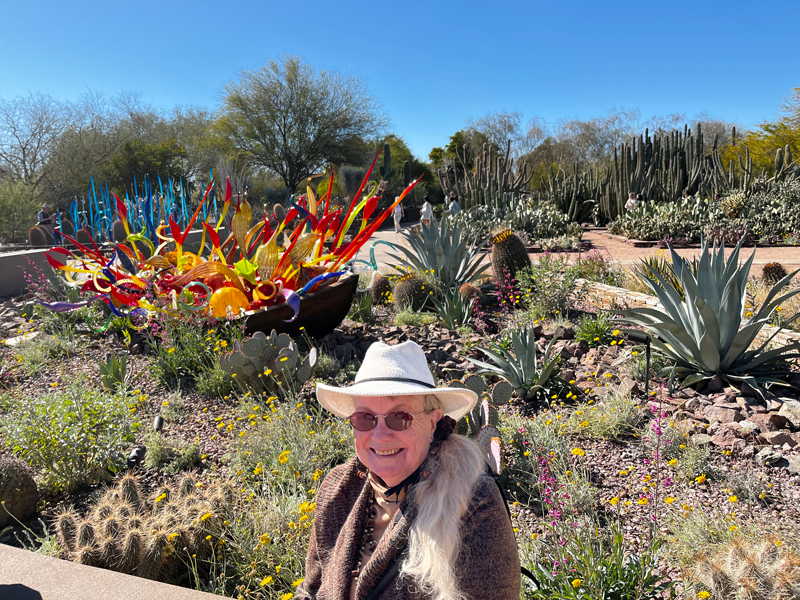
The Fiori Boat, 2018, is a perfect introduction to the variety of glass techniques that is typical of Chihuly, and it seems to glow happily amid its desert surroundings.
The wooden boat is full to overflowing with glass creations of many shapes and sizes. The longer you stand and look, the more variety you see.


As you walk through the gardens, you can’t help but admire the perfection of Dale Chihuly’s location choices. The second exhibit is of striking blue glass spears which contrast with intermingled desert cactus.
Deb’s exclamation when she read the title, Blue Birch Reeds and Scorpion Tails, 2021 was “they do look like scorpion’s tails!”

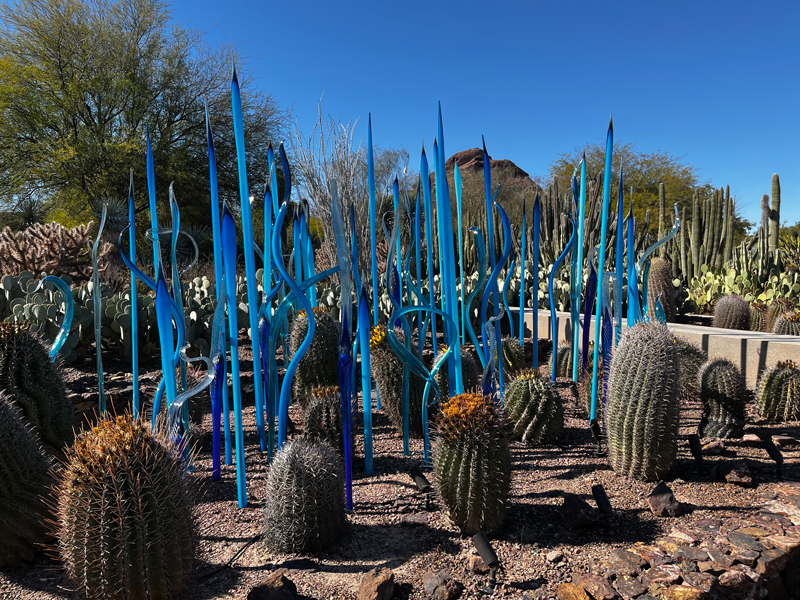
Chihuly’s glass looks as though it could have grown here, so perfectly is it intermingled with the native plantings…
… and the yellow tint of the barrel cactus is a perfect foil for the deep blues of the glass.
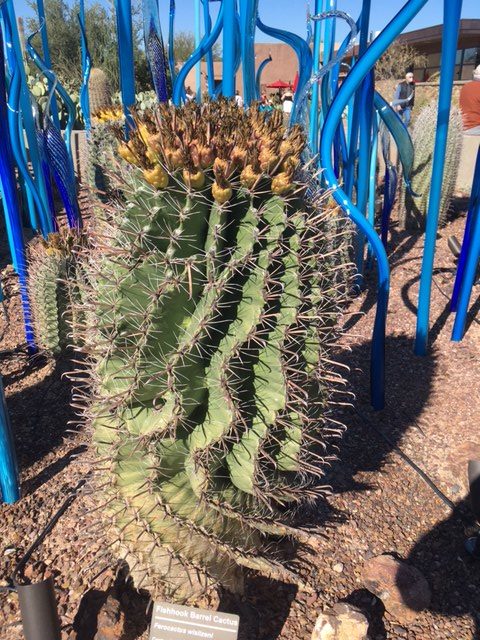
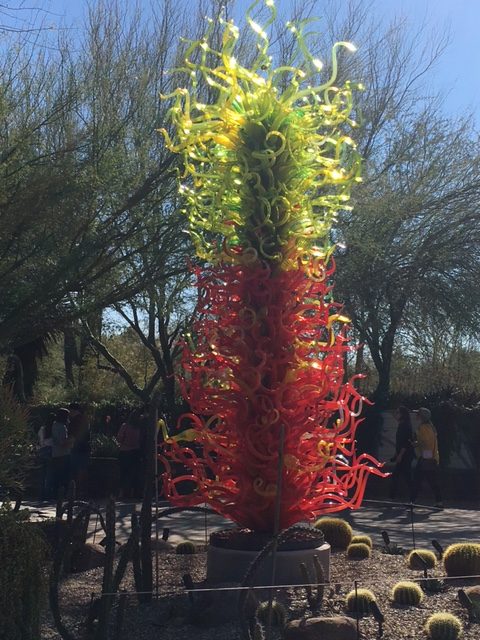
The next exhibit along the walkway is titled Lime and Lava Red Tower 2021, but we nicknamed it “The Christmas Tree.”
The first picture is approaching the Tower from the Visitor Center. This one is of the “back” of the tree on the return trip. It’s beautiful in both directions.
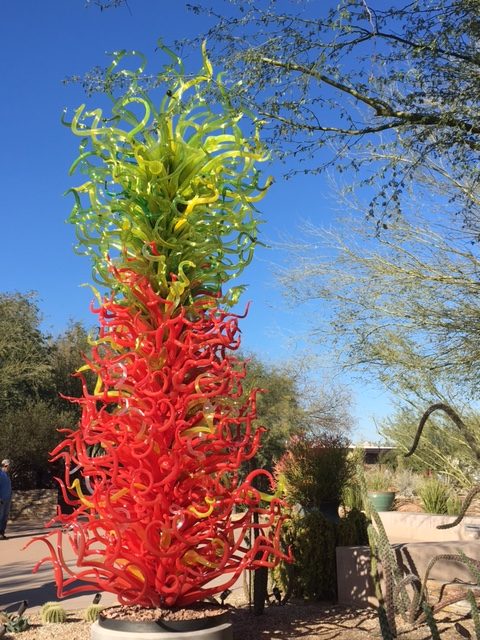
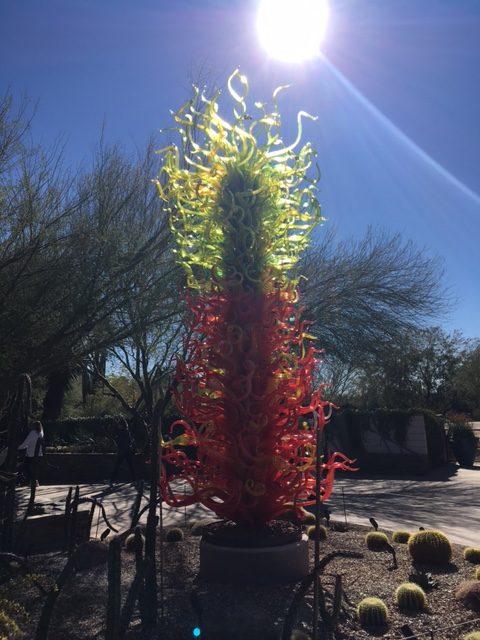
The sun was in perfect position when Deb snapped this picture.
This exhibit is a good example of some of the prep work Chihuly’s crew did to secure the sculptures. They cast the round concrete form which supports the tree.
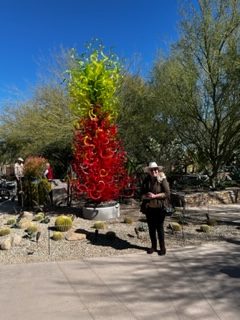

The next exhibit, Neodymium Reeds, 2021, is one of my personal favorites. You see the amazing purple glass sculpture initially from a distance with the mountain behind it. It is literally a “field of glass.”
Then, as the path turns the corner, the lavender reeds seem to grow like blooms among the tall Saguaro cacti.
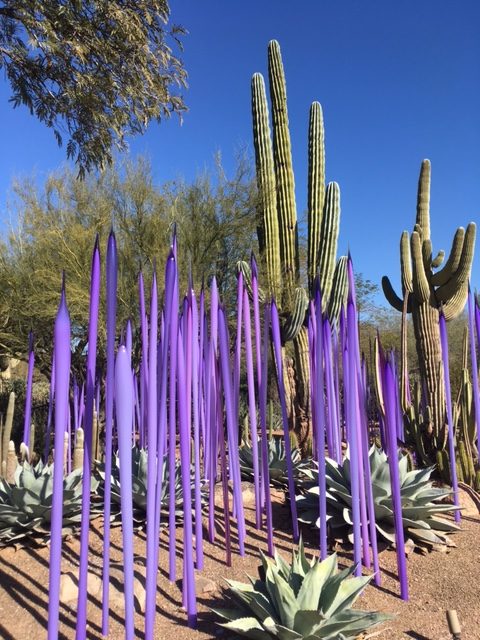
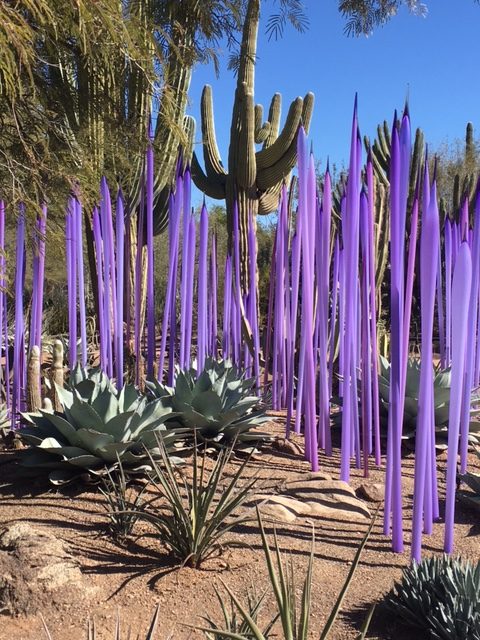
And a little further on, the reeds seem to be marching down the hill towards you. By the way, I looked up Neodymium glass (the discovery of the element is an interesting story too) and, among other things, it is used to make lasers and in electric cars. In glasswork, it is prized because it colors the glass in delicate shade of violet, wine-red, and grey.
One of the most dramatic displays is called Sol del Citron 2014 , a yellow and green globe with many curling tendrils.
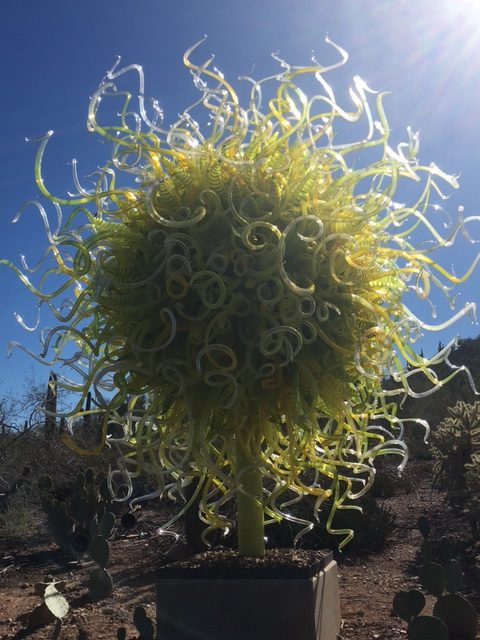
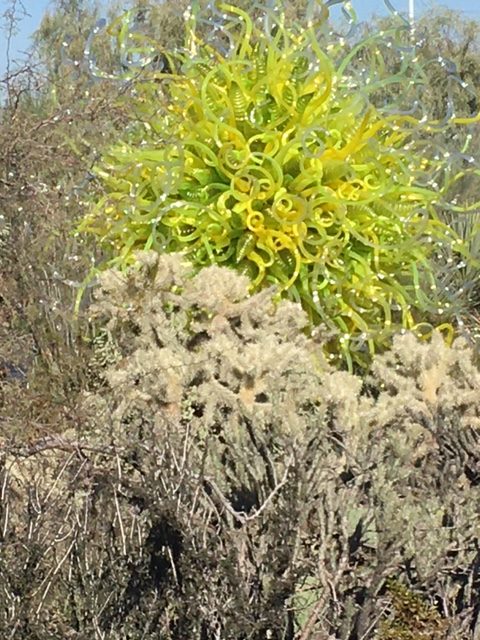
This picture, taken from the other side, shows the Sol or Sun emerging from the native plantings.
On our second visit, Deb caught this picture of the sun immediately over the sculpture – one of many reasons we were glad to go back for a second time.
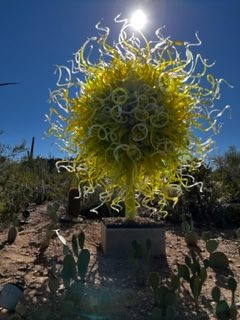
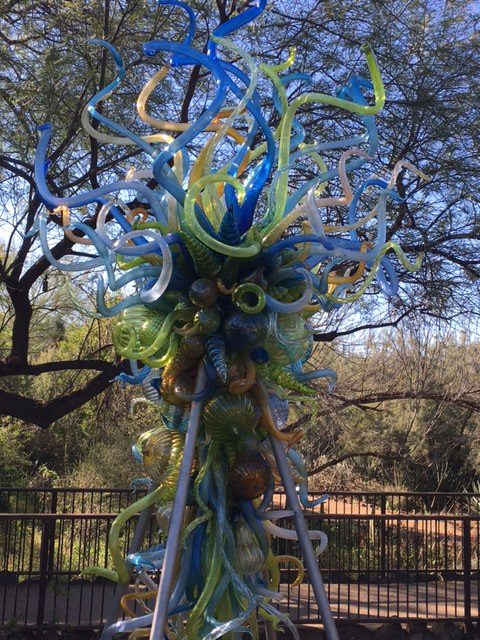
This sculpture is called the Aqua Blue and Amber Chandelier – 2011. It is both whimsical and organic.
Another example of the pre-planning needed for this exhibit. The supporting metal framework is mounted in the bottom of a small wash so that the top of the “Chandelier” is slightly above eye-level when you are standing on the bridge that crosses the wash.
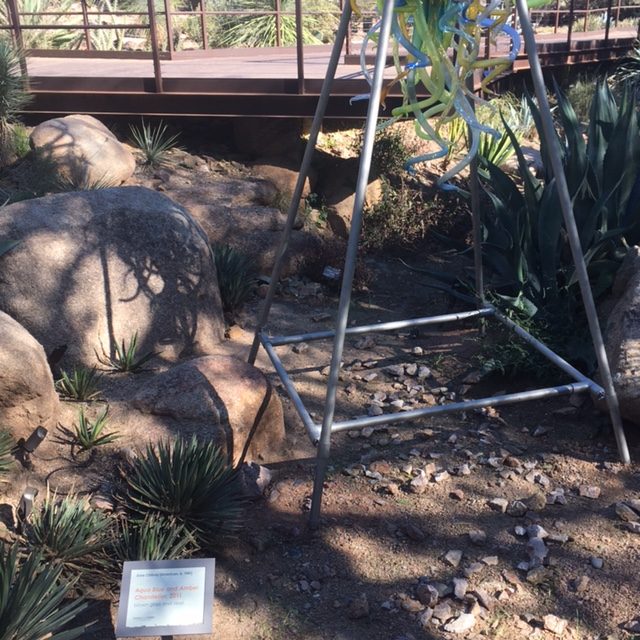
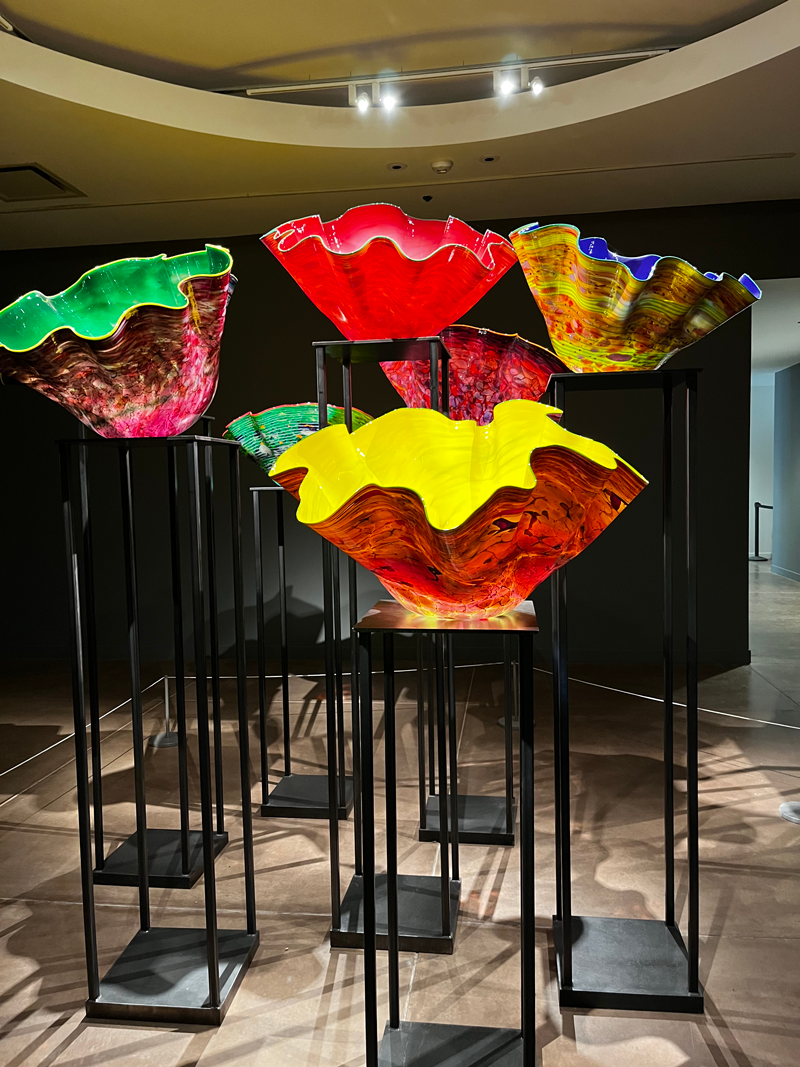
One of the most unique features of this Chihuly exhibit is the use of Dorrance Hall for an unusual indoor collection of some of Chihuly’s paintings which inspired his glasswork. There are also displays of his smaller glass pieces. This entry piece, Macchia, stands about six feet high and the “flowers” are lighted from the inside. According to the description, the Macchia sculptures were developed because Chihuly wanted to display ALL 300 colors in his hotshop, so he had to create new methods for layering colors.
Neither Deb nor I had seen Chihuly paintings before and they are beautiful by themselves.
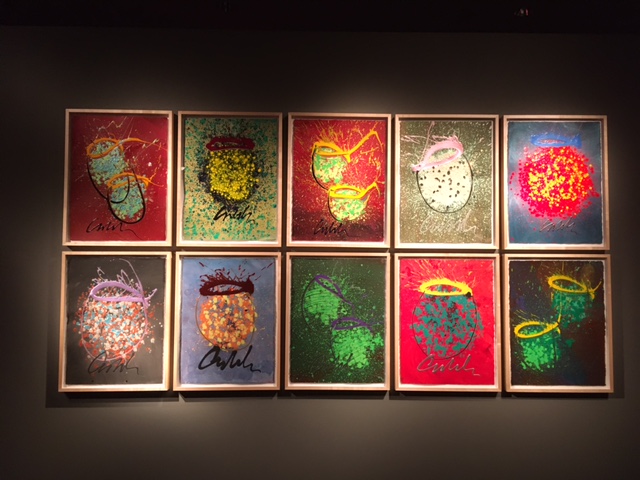
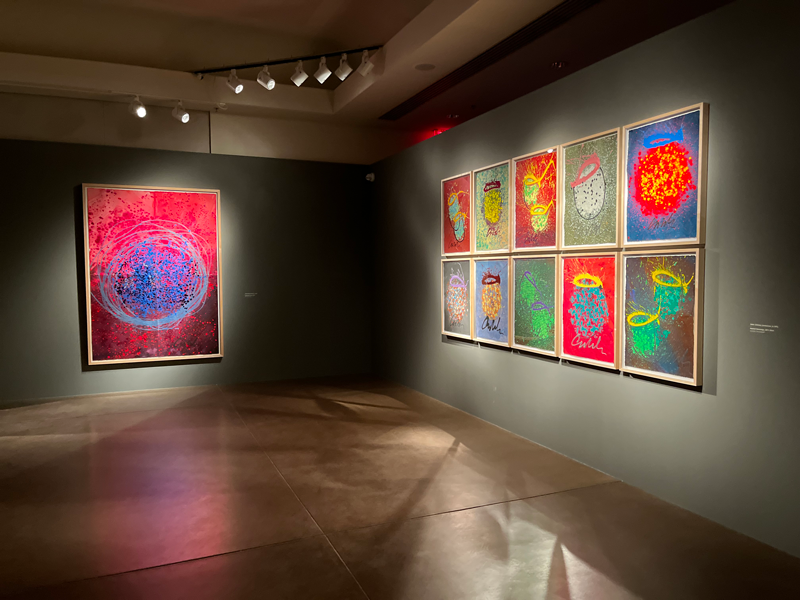
Our understanding is that the paintings were Chihuly’s way of capturing his inspirations for new designs. Chihuly developed many series of glass creations: Cylinders and Baskets; Seaforms, Macchia, Persians, Venetians, Floats, Chandeliers, and Fiori to name the main ones. The paintings were the basis for those designs.
The paintings stand alone as beautiful art, but Deb and I would like to know the “behind the scenes” process when Chihuly or his glassblowers converted the painted images . . .
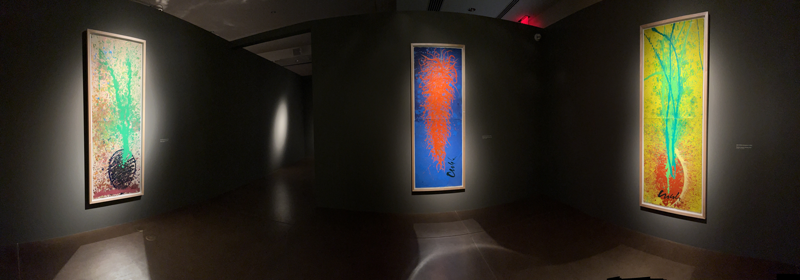
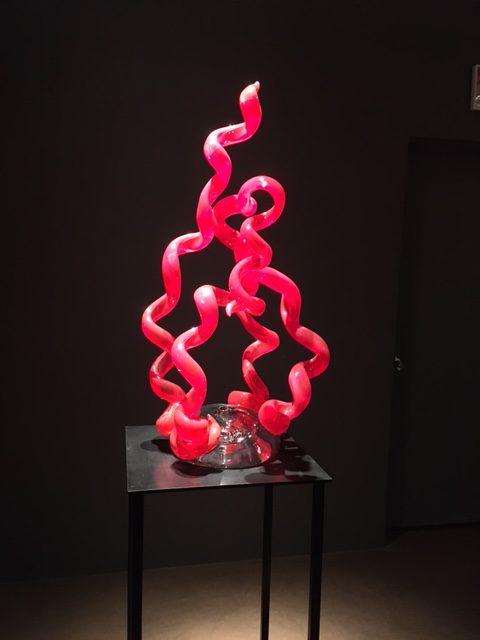
… to three-dimensional glass sculptures.
In the center of the main display rooms are a variety of Chihuly sculptures from different periods. This is a striking piece which I nicknamed “Candelabra,” but is composed of almost plant like forms.
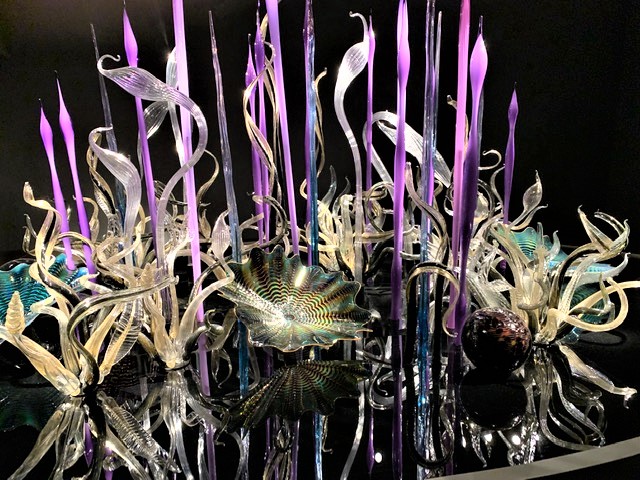
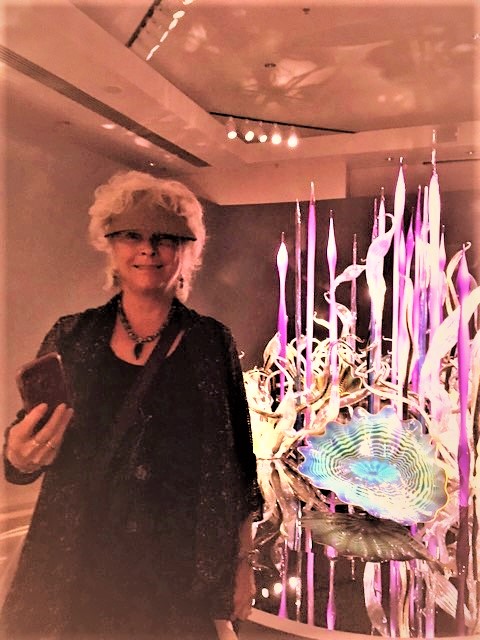
Deb paused in her filming to give a sense of the scale of some of the pieces. The rooms inside Dorrance Hall were illuminated primarily from the lighting of the artwork which made it a very dramatic space.
Deb took my picture in front of a series of paintings of vases.
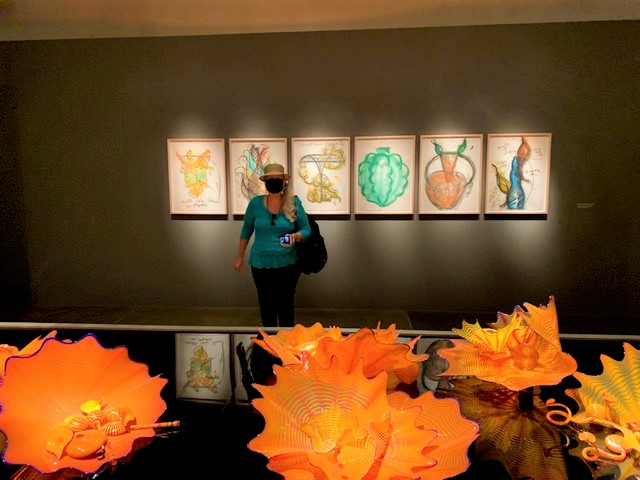
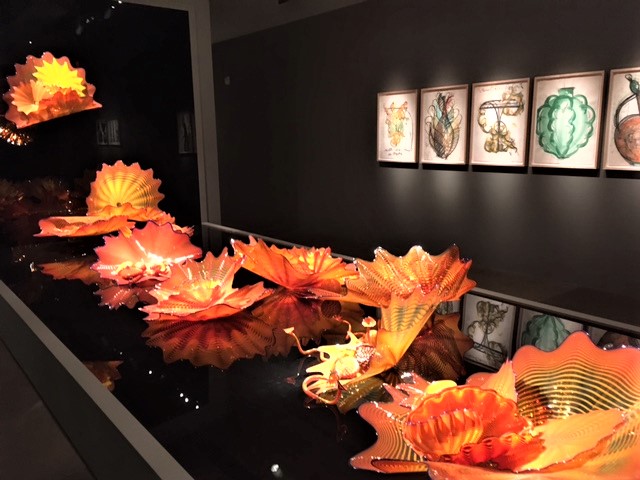
One of the most striking displays was of orange waterlily-like flowers on a long table which gave the impression of them floating on water.
This is a close-up of just one of the gorgeous orange flowers.

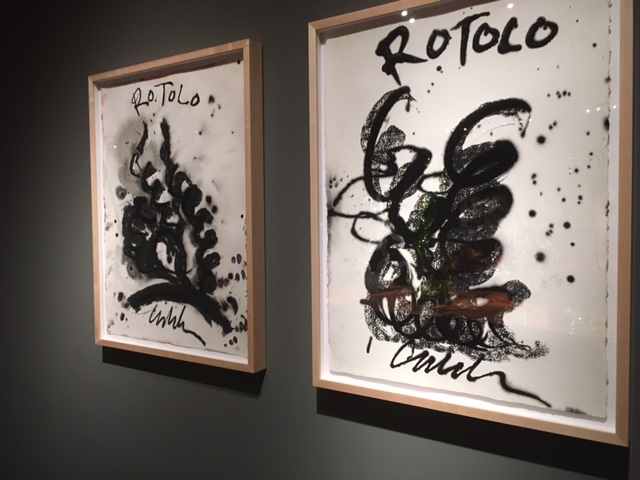
Rotolo is Italian for “coil.” Chihuly began working with his Rotolo designs as drawings in 2013. He initially wanted to explore “the quality of light emanating from the complex clear glass forms.” Eventually, this evolved to include “rich hues of red, blue, green and purple.” The designs were converted into blown glass beginning in 2017.
Another painting was a series of vases with different decorations. As you might guess, Deb and I were constantly trying to figure out which paintings and which sculptures went together, but that wasn’t the goal of the display.

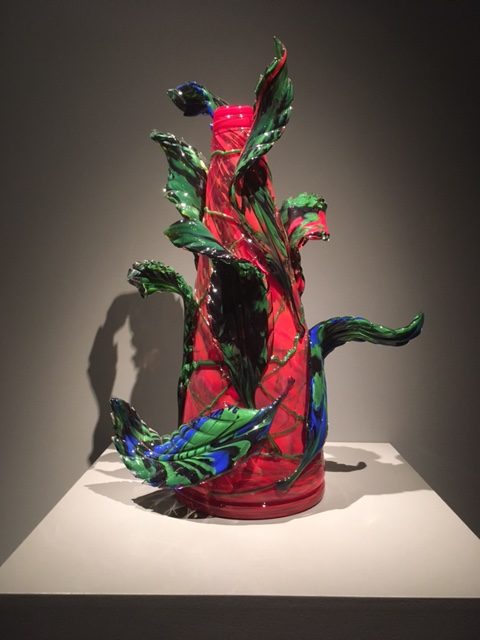
Maybe this one was inspired from the paintings of vases … or maybe not?
This bright orange vase was one of my favorites. I love the color and it’s certainly a “complex glass form.”
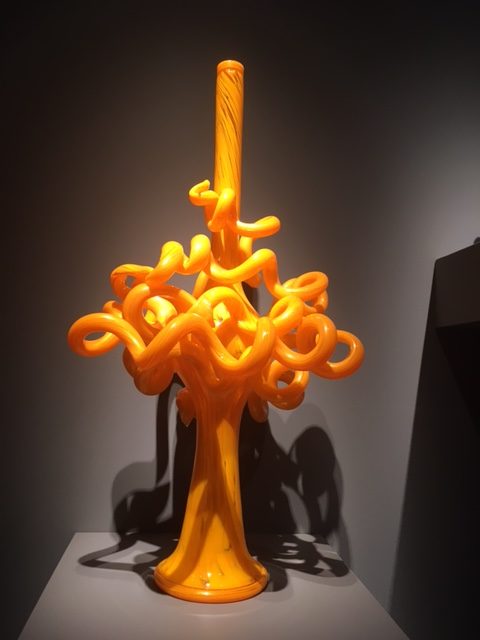

There were many more outdoor Chihuly displays, and Deb and I took pictures of all of them, but we want to encourage you to come and see for yourself. Besides, there’s no substitute for really “being there.”
After our tours, we always ended up back in the gift shop, where some of Chihuly’s paintings and glass designs are offered for sale.
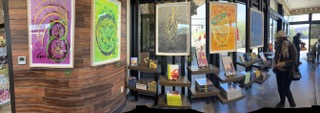
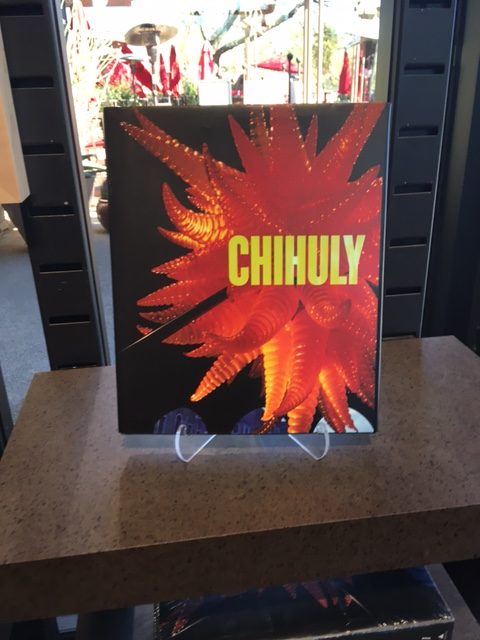
The gift shop offers a large volume about Chihuly…
… as well as smaller volumes featuring some of his collections.

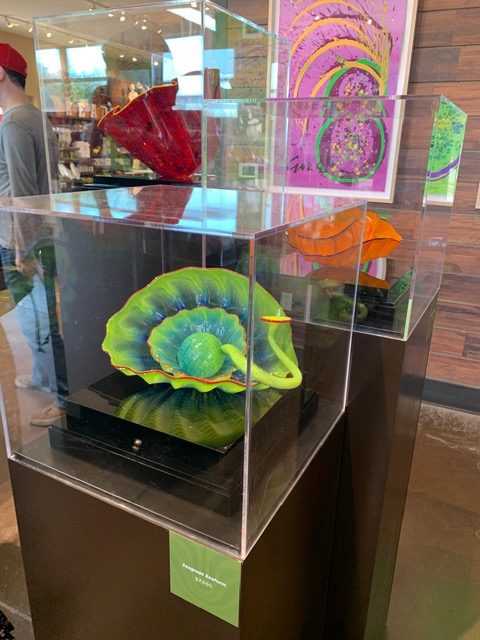
You may also purchase some of his gorgeous individual glass pieces – truly beautiful.
I was especially drawn to this beautiful red flower…
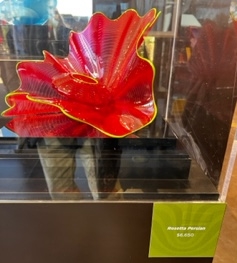
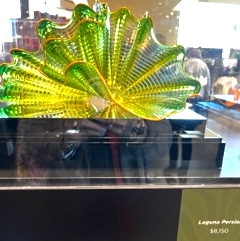
And this flamboyant green design which reminds me of sea coral.
The perfect ending for any visit to the Desert Botanical Gardens is always a stop at Gertrudes. The weather was perfect for patio dining.
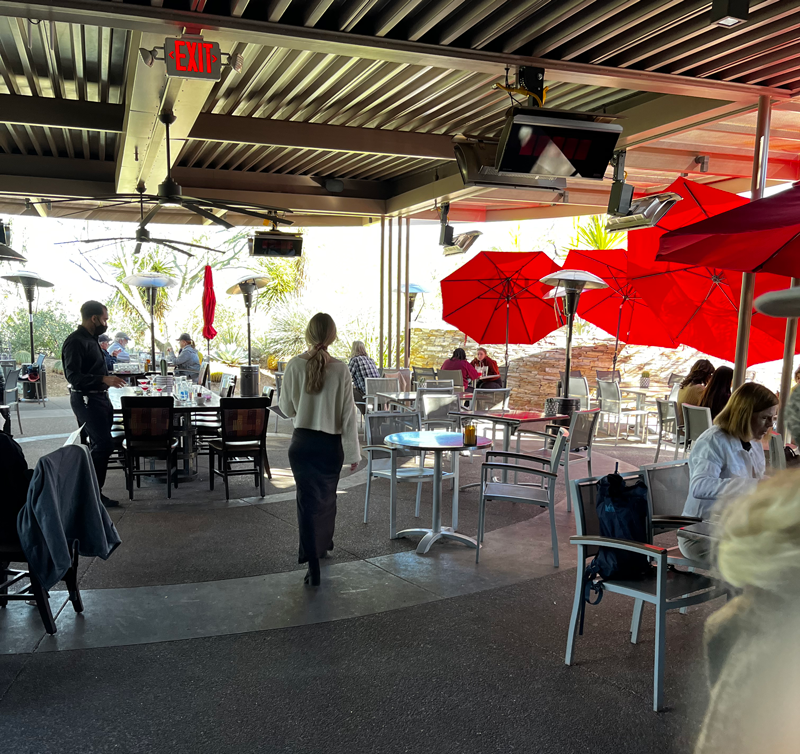
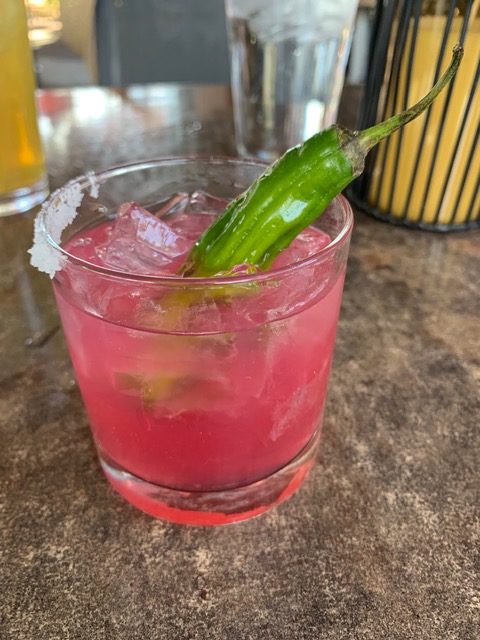
We ordered appetizers – different ones each trip. They were all yummy, but the crab dip from the first visit and the roasted cauliflower from the second were our favorites. And if you are interested in a beverage, there are wonderfully flavored ice teas and lemonade, a variety of alcoholic beverages, and their signature Habanero Margarita.
Chihuly is not forgotten at Gertrudes either, because the Desert Botanical Gardens is the proud owner of a few of his sculptures, so you can dine and admire the art of Dale Chihuly at the same time.
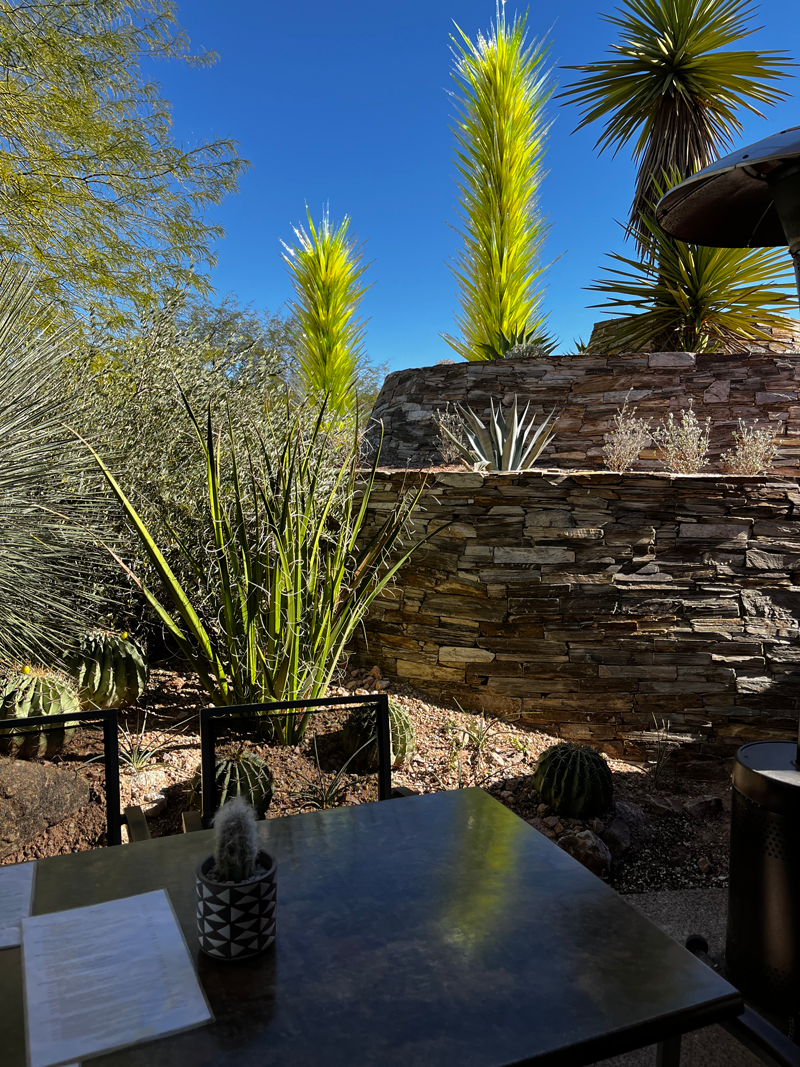
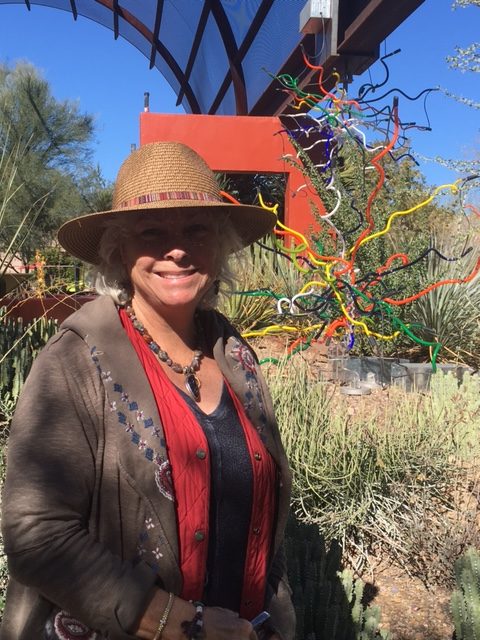
Many thanks to my friend, Deb, for two great visits to the Desert Botanical Garden and the Chihuly exhibit. We had a wonderful time – and I especially appreciate her photographer’s eye as many of the pictures you have enjoyed in this blog are hers!
If you like what you’ve seen and are going to be in the Phoenix area, do come visit Chihuly at two locations until June 19, 2022.
